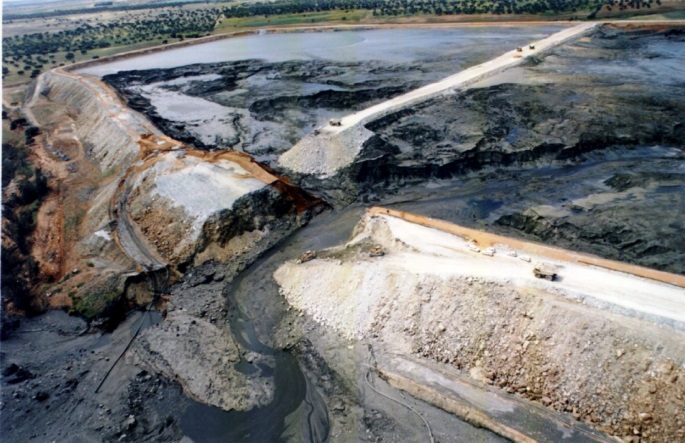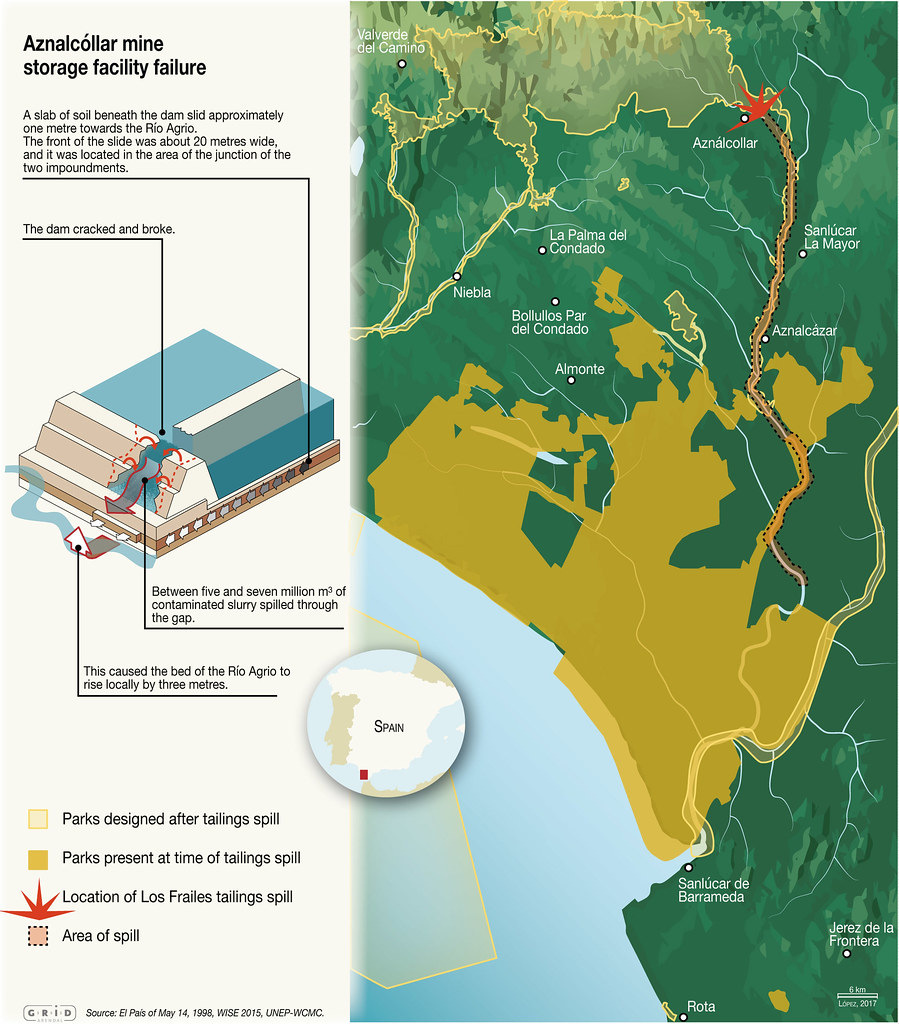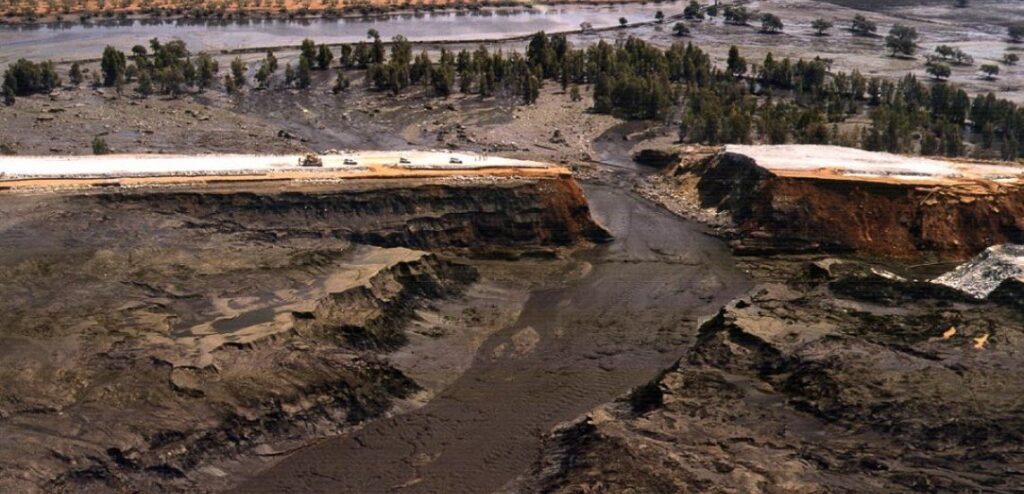The failure of Aznalcóllar Dam: An example of underestimationof the geological and geotechnical conditions with seriousenvironmental consequences

The tailing dam of Aznalcóllar (southern Spain), owned by the mining company Boliden Apirsa, was 28 m high when it failed on April 25, 1998.
The safety conditions of the dam had been checked three years earlier and both the owners and those responsible for the design confirmed that it fulfilled all construction and safety requirements. This conclusion was reiterated just 5 days before the disaster.
The failure of the dam released a 4.5 Hm3 of liquid mine waste into the river Agrio, and from there into the Guadiamar, tributary of the Guadalquivir.
The surrounding land was flooded, contaminated with acid water containing heavy metals, affecting all the surrounding ecosystems in the area, including Doñana National Park.
The dam was founded on a Miocene overconsolidated high-plasticity clay formation, known as blue marl, which contains frequent shear surfaces with slickensides.
These blue marls have been extensively studied and the problems they cause were well known, especially in the stability of slopes of roads and railways of southern Spain.
Their strength can be very low when they come into contact with water and when high pore pressures are generated along shear surfaces. According to the expert reports, the failure of the dam was due to a failure in the clay substratum, causing the foundation of the dam to slide forward .
After the event, it became clear that the geological and geotechnical factors which caused the dam failure were not adequately taken into account, and that the monitoring systems were not operative, both fundamental aspects in geological engineering.


